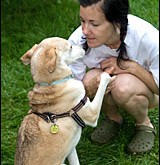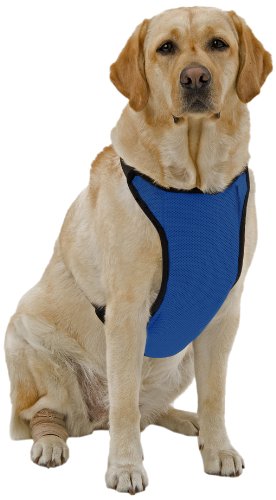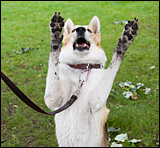

It is always a pleasure to have guests over that enjoy the company of your pooch. Better yet, have guests that enjoy the company of an entertaining well-trained pooch. Training your dog is not only great for proving that your beloved pet is better than your typical dog next door, but it will be useful during emergency situations when you need your dog to be reliably obedient. By teaching tricks, your dog’s confidence will grow and his/her mentality will remain sharp into the golden years. It is a great way to build a strong relationship with your pet. Remember, it is never too late to teach an old dog new tricks.
First of all, choose a suitable location to train your dog. The area should be free of distractions that will disrupt your pet’s concentration. Training sessions should not be regarded as play sessions. Your dog must be taught that these periods of training are serious and that he/she will be allowed to play to his/her heart’s content once the session is over.
Next, consider what to use as a reward. Food treats may be used, but try not to depend solely on food to train your dog. Treats can be used to encourage your dog to pay attention, but your verbal praise should be your main reward. Your goal is to have your dog perform the trick regardless of whether or not you have a treat in your hands. Most dogs will feel rewarded if they just receive praise for correctly doing a trick. Praise can take various forms. For example, saying “good boy!” in an energetic, positive tone or petting the dog are two forms. Some dogs also respond well to having their favourite toy as their reward. For example, throw their favourite Frisbee as a reward for correctly performing a trick.
Set up a schedule to begin training your pet. If possible, arrange two training sessions per day. Begin with ten minute sessions if you can manage two a day. If you only have time for one session, limit the time to no more than half an hour. Puppies tend to have shorter attention spans, so adjust your training session accordingly. Observe your dog during the training period and you will be able to tell when he begins to become bored or distracted. That is the time to end the session. As you and your dog advance through your training, the time limit can be extended.
Begin with these two basic commands to allow both you and your dog to gain enough confidence and discipline to try new unique tricks.
SIT
The simplest trick to teach your dog is the ‘sit’ command. While facing your dog, hold a treat in front of your dog’s nose and bring your hand upwards and towards your dog’s rear end. You may need to physically push down on your dog’s rear end with your other hand. As soon as your dog’s rear is on the floor, praise lavishly and give the treat. If your dog begins to lie down in the process, step towards him/her until he/she is in the sit position and reward. You may associate the sit command with a hand signal if you wish. Use your hand signal at the same time that you say “sit”. The sit is the easiest of all the commands, which is why it is often taught first. It is important that this first lesson is learned perfectly because you will find that many tricks begin with the simple sit. Your dog must sit promptly and squarely on command and you should not have to repeat the command more than once.
LIE DOWN
The next command is teaching your dog to lie down. Begin with your dog in the sit position facing you. With a treat at the level of your dog’s nose, lower the treat to the floor and bring it towards you. Your dog’s nose should follow the treat and his/her body will naturally crouch into the ‘lie down’ position. Reward as soon as your dog’s tummy reaches the floor.
It’s best to master one trick completely before moving on to the next one and both you and your dog should be enjoying the exercises. Some dogs respond better to tricks and training than other dogs. If you are having trouble with these exercises it’s advisable to get some additional help from a trainer that can help teach the basics. Ask your vet or someone you trust for a reference.
 Cooling Vests For Dogs
Dogs feel the heat just like
Cooling Vests For Dogs
Dogs feel the heat just like
 10 Dog Breeds For Laid Back Lifestyles
10 Dog Breeds For Laid Back Lifestyles
Make Room On The
10 Dog Breeds For Laid Back Lifestyles
10 Dog Breeds For Laid Back Lifestyles
Make Room On The
 Dog Tricks – Dog Training Level 2
Dog Tricks – Dog Training Le
Dog Tricks – Dog Training Level 2
Dog Tricks – Dog Training Le
 Our Thoughts On Neutering
My Two Pugs
Credit: Personal Photogra
Our Thoughts On Neutering
My Two Pugs
Credit: Personal Photogra
 Can Your Dog Live Longer?
Live Long and PlayMans best
Can Your Dog Live Longer?
Live Long and PlayMans best
Copyright © 2005-2016 Pet Information All Rights Reserved
Contact us: www162date@outlook.com